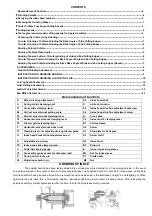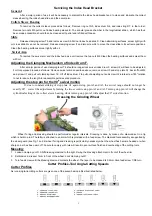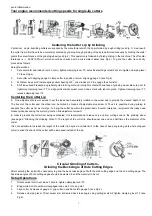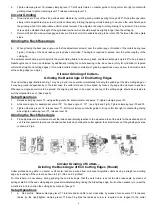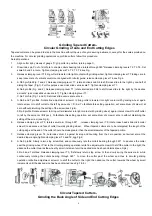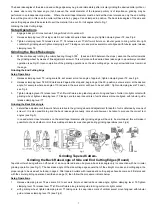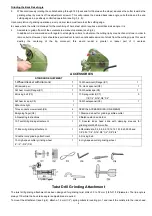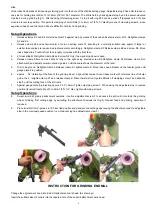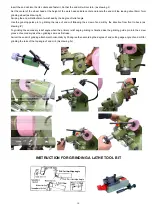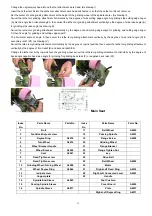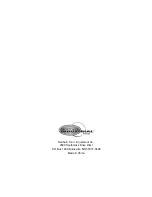
The back rake angles of the side and end cutting edges may be ground immediately after circular grinding the desired cutter profile; or
in cases where only the taper angle (not, however, the small diameter of the tapered portion) is of importance, grinding may be
performed in an independent operation. Where the small taper diameter must be held within close tolerances, only the end cutting
face will be ground; in this case the cutter will have to be by gauge C and clamped in position. The back rake angles of the side and
end cutting edges should be selected to suit the material to be cut. For toll angles refer to Fig. 1.
Grinding the Side Cutting Edge
Setup Operations
1.
Engage index pin R into shoet-slot; bring white dot into window O.
2.
Release clamping lever T2 using scale S2 set cutter at desired back rake angle; tighten clamping lever T2, see Fig.2.
3.
Tighten clamping lever T4;release lever T7; T4;release lever T7;shift work fixture on tubular guide to bring cutter into light
contact with grinding wheel tighten clamping lever T7,taking care to keep index swivel mount aligned with tubular quite; release
clamping lever T4.
Grinding the Back Rake Angle
4.
While continuously rotating the collets bearing through 180
o
(back and forth between the stops), advance the cutter towards
the grinding wheel by means of fine adjustment screw H. This will produce the desired back rake angle in a positively controlled
operation (see Fig.2). Upon completion of the grinding operations on the side cutting edge, a very narrow land must remain at
the edge.
Grinding the End Cutting Edge
Setup Operations
1.
Release clamping lever T2; using scale S2, set swivel arm at an angle of approx.3; tighten clamping lever T2, see Fig.3.
2.
Release clamping lever T# ND t6;Hold scale F against its stop and, beginning at the 90 –position, set swivel arm at the desired
angle; for example where an angle of 10 is desired, the swivel arm will have to be set at 80 . Tighten clamping levers T3 and t,
see Fig.4.
3.
Tighten clamping lever T4;relese lever T7;shift work fixture along tubular guide to bring end face of cutter into light contact with
grinding wheel; tighten clamping lever T7,taking care to keep index mark of vertical swivel mount aligned with tubular guide;
release clamping lever T7.
Grinding the Back Rake Angle
4.
Lateral fine adjustment of the work fixture relative to the grinding wheel and adjustment for depth of cut is obtained by means of
screw H. It is also possible to grind the back rake angle manually; care should however, be taken to produce the correct tool
angles (see Fig.5).
In cased where close tolerances on the small taper diameter after grinding edge will have to be maintained; this will make it
possible to check whether or mot the small taper diameter was changed during grinding operations (see Fig.6)
Grinding Tapered Cutters-
Grinding the Back Rake Angle of Side and End Cutting Edges (Round)
Tapered cutters having either an off-center of an on-center adios can be given a back rake angle only in connection with her circular
grinding operation (see Fig.1). The back rake angle of the side cutting edge equals that of the straight or codec end cutting edge; the
proper angle to be used will be found in page 5. After tapered cutters with rounded end cutting edges have become dull, first proceed
with the circular girding operation described on page 12; then follow the procedure indicate below.
Setup Operations
1.
Release clamping lever T2;use scale S2 to set work fixture at desired back rake angle; tighten clamping lever T2.Tighten
clamping lever T4;release lever T7;shift work fixture along tubular guide to bring cutter into light contact
2.
with grinding wheel; tighten clamping lever T7,taking care to keep index mark of vertical swivel mount aligned with tubular
guide; release clamping lever T4.(see Fig.2)
7


